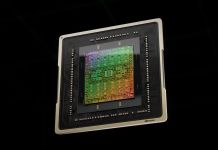In today’s jungle of different cooling solutions I thought I could write a little description of the most commonly used method. First is the simplest form, namely aircooling. It simply works by transferring the heat from a hot part to the air with or without heatsink, and to get a torrent of air…
In today’s jungle of different cooling solutions I thought I could write a little description of the most commonly used method. First is the simplest form, namely aircooling. It simply works by transferring the heat from a hot part to the air with or without heatsink, and to get a torrent of air. Aircooling is the simplest sort of cooling there is, and no matter what system you look at, there is aircooling on it in one way or another. Aircooling is used on almost every component in the computer in varying ways. It is also the most common way to cool the processor. The reason why cooling is needed more and more is that the faster computer get’s the more heat they release. Temperatures over 50-100 celsius are directly harmful to the components, so the heat must be transferred away in some way. First out is the theory behind air cooling, so read on!
One of the most fundamental physical laws is that nature always strives to achieve balance. If you for example put ice in a bath of hot water, the ice will melt and the warm water will be a little colder. If you place a plate of biscuits in a warm oven, the biscuits will become warm. This is the principle behind all forms of cooling, if you have a thermally warmer material in contact with a thermally colder, the warmth will move from the warmer to the colder. If all materials would be leading warmth perfectly, then this motion would be achieved in the blink of an eye, but fortunately all materials have a thermical resistance.
If that hadn’t been the case, the temperature of the whole universe would have been constant, no matter were you were, and that would be rather unpleasant, considering the temperature of most observed materials out there. The thermical resistance does bring a problem – that things sensitive of high temperatures, developing great amounts of thermal energy, need help in cooling themselves. Without the natural slowness, it would have had the same temperature as its surroundings all the time. A processor is a very good example of this, without any form of cooling, it will simply have to clock down or burn up.
There are two important concepts, required to understand the essentials of how air-cooling works and why cooling mechanisms are designed the way they are. The two concepts are thermal conductivity and thermal capacity. The thermal conductivity is a measurement of the thermal resistance of a material, i.e. how well it transports thermal energy. To give a deeper understanding of what this means I will exemplify:
Let’s say you have one piece of iron and one piece of wood. Both of them have a temperature of 100 centigrade (the boiling point of water). What happens if you touch them? Well, if you touch the piece of wood, it might sting a little at first, but then it’ll be all right. If you touch the iron, you can get blisters and get even worse injuries. Think about how it feels to touch one of the nails in a sauna, and this principle should be quite clear.
The thermal capacity is a measurement of how much thermal energy a material can absorb. The thermal capacity doesn’t really matter very much when discussing cooling, it is only important when determining how much time it will take for the cooling flange to get hot. A higher thermal capacity enables the flange to last longer before getting hot.
As you can see above, silver is the best material for cooling, closely followed by copper. Gold and aluminium perform substantially worse. Here we can see why a cooling flange is often needed to cool chips, air has very bad qualities concerning the transfer of heat.
The thermal energy needs to get to the air sooner or later, but since air is such a bad conductor of heat, we are forced to put our efforts in increasing quantity. You change the air that is closest to the cooling flange, this can be done in two ways: passively and actively.
The passive if the simplest form, here you have no forced flow of air, but instead let the air circulate through convection. Convection is the natural movement of air, most people know that for example warm air rises. When the air is heated by the source of heat or cooling flange, it will rise, which means that cold air will replace it. This flow of air is enough when dealing with chips with no greater development of heat. The problem is that the flow of air is very small, and when it becomes a little two hot, the power of convection needs a hand. Mounting a fan on the cooling flange easily solves this. Then the air will be changed much faster, which means that more heat flows from the cooling flange and the thing one wishes to cool gets colder. A more powerful fan makes cold air replace hot air even quicker, which makes the cooling flange even colder. As soon as you in some way create a flow of air the cooling is called active.
It is not only the material that determines whether a heatsink works well or not, even if it is an important part. The most important thing is that you have as large contact area with the air as possible, since it is only the closest air that gets heated up because of the low heat conductivity. This can be seen on almost every heatsink, they have many small fins. Swiftec has a different solution with a lot of ribbed pipes, this solution shold give maximum contact with the air.
|
|
|
Concerning fans there are two factors which are important: airflow and level of noise. The airflow is often measured in CFM, which is Cubic Feet per Minute. It might not be the most comfortable unit of measurement there is, but it works. 1 cubic foot per minute is about 1.7 cubic meter per hour. The level of noise is measured in dBa, and it is very hard to say how much a dBa is. You have to try to make up your mind for yourself, but under 20 is general not hearable. The most common form of fan is axial fan, but there are more exotic coolers that uses radial fans. A nice example is the well known Silverado which took the market by storm when it was launched. Axial fans are either equipped with ball bearing or plain bearing, and they are good in different ways. Ball bearing tends to live longer, but they often make more noise.
Observe that you don’t always get a fan when you get a processor cooler, make sure to look up if you only get the heatsink or both a heatsink and a fan. Heatsink + Fan is often called HSF (HeatSink Fan).
Air cooling is not only used on the processor, if you look closely in your computer you’ll probably find many components which are aircooled. An example is the video card, which is often actively cooled. Sometimes the memory capsules on the video card are passively cooled. Furthermore there is often active cooling on the north bridge, and if you look inside the power supply you’ll find several heatsinks.
An AMD Athlon XP 2100+ at 1.5V generates 56.4W heat and an Intel Pentium 4 2533MHz at 1.5V generates ca 59W. A GeForce 4 TI4200 generates around 45W, so the video card’s heat dissipation is quiet serious. The processor is however the component which requires the most cooling in the computer.
|
|
|
To exchange the air in the case you also use aircooling, but without heatsinks. Most of you might have chassie fans, fans which only exchange the air in the case and are not used to cool a special component. There are no alternatives here today, you always need airflow inside the case.
| Pros/Cons |
Air cooling has very many practical advantages, you only need to mount a heatsink and you’re done. In some cases you also need to mount a fan, but that is also very simple to do. It is also the cheapest cooling variant, and the one with the widest range. When it comes to price and the practical part it is without doubt the winner.
The big disadvantage is that you use air as cooling medium, which limits the performance very much. You can never get what you cool below the room temperature, unless you’re using more exotic cooling solutions. Except the performance there are not so many disadvantages, the noise level is often higher than other cooling solutions but otherwise there are no problems.
| Summary |
Air cooling is the best for the beginner, and for the little more advanced users. When you start to talk about serious overclocking with high voltages and stuff like that, the performance is not good enough, then you have to consider other types of cooling. In the next article we will look into watercooling, so stay tuned!
























Leave a Reply